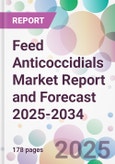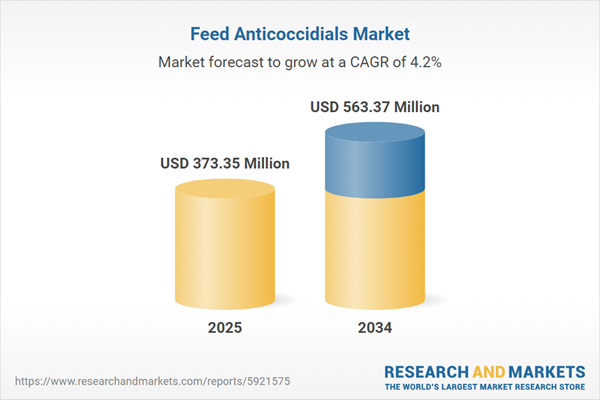Market Segmentation
The global feed anticoccidials industry can be divided based on segments like types, livestock, forms, sources, and mode of consumption.Based on type, the industry is segmented as:
- Monensin
- Lasalocid
- Salinomycin
- Nicarbazin
- Diclazuril
- Narasin
- DOT (Dinitro-O-Toluamide)
- Others
Based on livestock, the industry can be categorised as:
- Poultry
- Swine
- Ruminants
- Others
Based on form, the industry can be segmented as:
- Dry
- Liquid
Based on the source, the industry can be segmented as:
- Chemical
- Natural
Based on the mode of consumption, the industry is bifurcated into:
- Oral
- Injection
Breakup by Region
- North America
- Europe
- Asia-Pacific
- Latin America
- Middle East and Africa
Market Analysis
The factors attributable to the feed anticoccidials market growth are the increasing threat of coccidiosis in livestock and the increasing demand for anticoccidials from the regions like the Asia-Pacific, South America, and the Middle East and Africa.The Asia-Pacific region, with the presence of a huge number of domesticated animals, accounts for a significant share in the global feed anticoccidials market. Further, the region is witnessing increased consumer attention towards animal healthcare owing to the rising awareness about animal health and the growing health expenditure, particularly in emerging nations like India and China, which will provide opportunities for the industry growth. China and India also experienced a significant growth in livestock breeding for meat.
On the other hand, stringent regulations on the usage of chemical anticoccidials in feed products to ensure the sustainability of the feed and livestock chain, particularly in the EU nations, are hampering the industry growth for anticoccidials. However, with the increasing regulations on chemical anticoccidials, the manufacturers are focusing on the use of natural or herbal extracts with anticoccidial property, which is expected to generate growth opportunities for new entrants in the industry over the forecast period.
Competitive Landscape
The report presents a detailed analysis of the following key players in the global feed anticoccidials equipment market, looking into their capacity, competitive landscape, and latest developments like capacity expansions, plant turnarounds, and mergers and acquisitions:- Elanco
- Huvepharma EOOD
- Phibro Animal Health Corporation
- Zoetis Services LLC
- Kemin Industries, Inc.
- Qilu Animal Health Products Co., Ltd.
- Virbac S.A.
- Merck Animal Health
- Others
Table of Contents
Companies Mentioned
The key companies featured in this Feed Anticoccidials market report include:- Elanco
- Huvepharma EOOD
- Phibro Animal Health Corporation
- Zoetis Services LLC
- Kemin Industries, Inc.
- Qilu Animal Health Products Co., Ltd.
- Virbac S.A.
- Merck Animal Health
Table Information
| Report Attribute | Details |
|---|---|
| No. of Pages | 178 |
| Published | August 2025 |
| Forecast Period | 2025 - 2034 |
| Estimated Market Value ( USD | $ 373.35 Million |
| Forecasted Market Value ( USD | $ 563.37 Million |
| Compound Annual Growth Rate | 4.2% |
| Regions Covered | Global |
| No. of Companies Mentioned | 9 |









